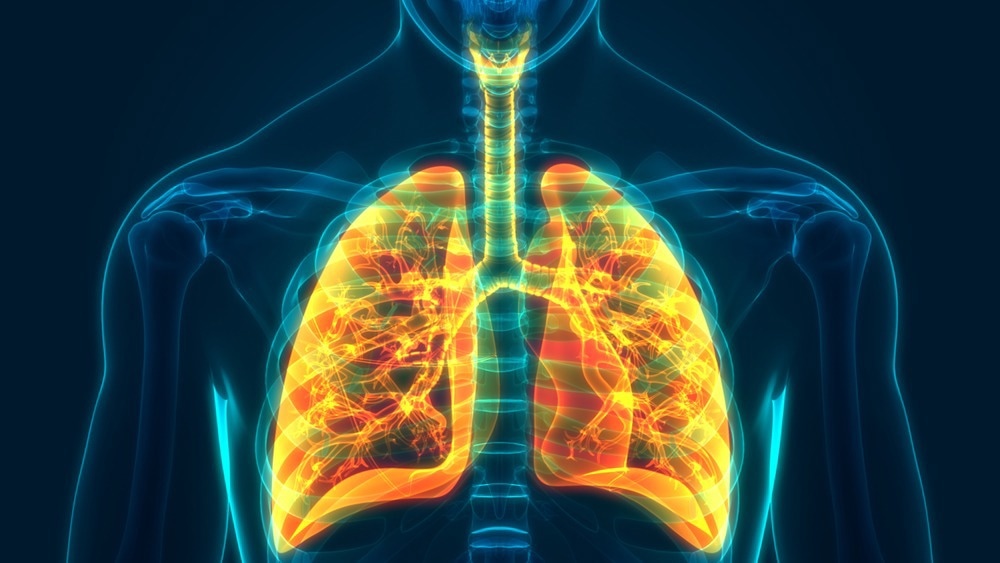The precise, continuous monitoring of pollutants such as nitrogen oxides (NOx) in high humidity is a tough challenge for low-cost and stretchable gas sensors.

Study: Moisture-resistant, stretchable NOx gas sensors based on laser-induced graphene for environmental monitoring and breath analysis. Image Credit: Magic mine/Shutterstock.com
A recent article published in Microsystems & Nanoengineering describes the design and implementation of a novel, moisture-resistant, and wearable NOx gas sensor based on laser-induced graphene (LIG) that has proven successful in monitoring the environment and classifying individuals with breathing problems.
Importance of Nitrogen Oxides (NOx) Detection
Nitrogen oxides (collectively referred to as NOx) produced by combustion processes and petroleum refineries are significant air pollutants that cause bronchitis, asthma, and heart-aggravating disorders.
Nitric oxide (NO), a key biomarker for pulmonary inflammation, is of great relevance for the non-invasive detection and treatment of respiratory disorders such as lung cancer and ventilator-associated pneumonitis. This is because the level of nitric oxide in exhaled breath of asthma patients surpasses hundreds of parts per billion (ppb), but this amount is less than a few tens of ppb in healthy individuals.
Consequently, it is of the utmost significance to create new, inexpensive, and dependable gas sensors for continuously and precisely detecting nitrogen oxide (NOx) in human breath.
Wearable Graphene-based Gas Sensors for Detection of NOx
Several technologies using nanoparticles such as metal oxides, graphene, carbon nanotubes, and conductive polymers have been developed to detect NOx in human breath.
In contrast to the electrolytic cells, field-effect semiconductors and other conventional gas sensors, wearable NOx gas sensors based on graphene exhibit low noise and good mechanical robustness.
Wearable electronic devices can gather electrical, biochemical, thermal, physical, and biological information for comprehensive health management. The growing interest in personalized air quality assessment and breath testing has also increased the need for wearable graphene-based gas sensors that can detect different harmful chemicals, such as nitrogen oxides (NOx), precisely and continuously.
Graphene-based gas sensors with unmodified surfaces show low accuracy due to the absence of active sites. To tackle this issue, the newly discovered 3D laser-induced graphene (LIG) can be utilized because it provides a large number of active sites on the surface for gas-solid interactions.
Relative Humidity: A Major Limitation in Accurate Gas Sensing
As water particles populate the active surface functional sites of sensing nanomaterials, the relative humidity (RH) significantly affects the absorption and equilibrium mechanisms of the target gas, resulting in substantial response changes in breath samples with an RH between 50 and 95 percent.
The impact of relative humidity on gas sensing can be minimized by utilizing coated integrated heating components, hydrophobic self-assembled monolayers (SAMs), or electronic nose algorithms. However, these technologies often increase the sophistication and expense of gas sensor production.
Therefore, it is crucial to establish a simple method for designing and fabricating moisture-resistant NOx gas sensors with a large response rate, quick response/recovery, and a low limit of detection (LOD) for monitoring local air pollution and analyzing breath samples for disease diagnoses.
A Novel Moisture-Resistant LIG-based NOx Gas Sensor
In this study, the researchers created a novel, flexible, and moisture-resistant LIG-based NOx gas sensor by sandwiching the LIG sensing area between a semi-permeable polydimethylsiloxane (PDMS) layer and a flexible elastomeric platform.
The flexible, extremely sensitive, and selective LIG-based gas sensor is composed of a straight LIG sensing area and a serpentine electrode on a soft elastomeric platform. The LIG sensing region has a much narrower width (150 micro-meter) than the electrodes to produce substantially stronger resistance and concentrated Joule heating in the sensing zone,
The rapid and low-cost manufacturing method is also scalable, promising rapid large-scale production for commercial applications in the future.
Key Developments of the Research
At room temperature, the as-prepared gas sensor displays a high response rate, rapid response/recovery, and an ultralow limit of detection (LOD) for various nitrogen oxides (NOx). By adjusting laser processing parameters such as laser intensity, image frequency, and defocus distance, the laser direct writing method can produce LIG sensing zones with varying morphologies.
This unique water-resistant LIG-based gas sensor can detect the outside air quality at various times of the day by combining a high stretchability of 30 percent and a moisture-resistant capability against a relative humidity of 90 percent. In addition, it can promptly evaluate clinical breath samples to properly distinguish between patients with respiratory illnesses and healthy human beings.
Reference
Yang, L. et al. (2022). Moisture-resistant, stretchable NOx gas sensors based on laser-induced graphene for environmental monitoring and breath analysis. Microsystems & Nanoengineering. Available at: https://doi.org/10.1038/s41378-022-00414-x
Disclaimer: The views expressed here are those of the author expressed in their private capacity and do not necessarily represent the views of AZoM.com Limited T/A AZoNetwork the owner and operator of this website. This disclaimer forms part of the Terms and conditions of use of this website.